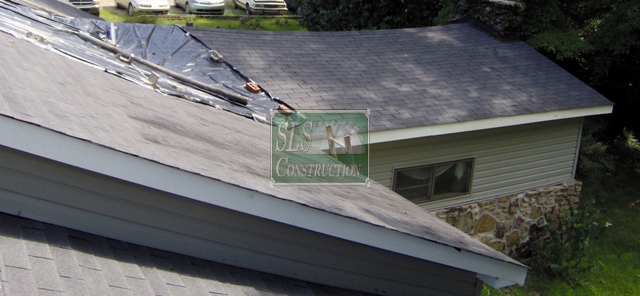 The idea that an article like this was needed was made abundantly clear to me on a recent project I completed. This project required us to completely remove and reframe an existing roof, while leaving the existing walls & floors untouched. During the consultation phase of this project, we covered all the normal items like material choices, options, budget, contractors insurance, the necessity of them reviewing their insurance policy, etc… They were quite shocked on some of the issues we addressed about what a policy covers and doesn’t cover.
The idea that an article like this was needed was made abundantly clear to me on a recent project I completed. This project required us to completely remove and reframe an existing roof, while leaving the existing walls & floors untouched. During the consultation phase of this project, we covered all the normal items like material choices, options, budget, contractors insurance, the necessity of them reviewing their insurance policy, etc… They were quite shocked on some of the issues we addressed about what a policy covers and doesn’t cover.
If it was just them, I wouldn’t have thought much about it, but I have met plenty of others that thought that they could save some money, by dropping their policy during the construction phase and restarting it once everything was completed. “We never gave it a second thought,” “we thought we were covered,” “I thought their policy,” are three of the most common phrases I hear on the news when everything seemingly goes wrong.
A quick note before we start:
Folks, I am not going to get into a game of what ifs – this article simply addresses some general policy terms from around the country in regards to renovations. Your State Laws & Insurance Regulations may vary from what is listed and your contractor may carry a better policy than the minimum required as we do. This article is mainly to help you consider issues that may come up during a renovation and to help you make sure your biggest asset is properly protected. In most cases, you won’t have any issues; but do you really want to roll the dice on that?
Contractor General Liability Policy:
As we addressed in the article on “Should your Contractor carry General Liability Insurance?” – general liability insurance is defined as an insurance policy that offers protection against third-party claims of property damage, injury or bodily harm, loss of life or limb, or negligence due to the direct or indirect actions of a company or its employees. Don’t you just love the legal speak, how about some simple examples…
Property Damaged Due to Rain:
Using the project described above, if I was negligent & did not tarp the opening off nightly, I could be held liable if it rained. However, if I did tarp off the project correctly & a major thunderstorm, hail storm, high wind event, etc… came through powerful enough to rip the tarps off, etc… the GL policy would not cover the damage.
Property Damaged or Stolen by Others (including ongoing work & materials):
Can you say, not covered by the policy? Just like the example above, while a contractor is required to secure the area or site being worked on, there are practical limits. Some contractors will carry an “All Risks” or “Inland Marine Coverage”, which will cover these items up to a certain limit. In some cases, even though a contractor’s policy may pay the amount up front, they might be calling your carrier for reimbursement.
Injuries:
The injuries covered by a GL policy are limited to third parties, caused by the companies or employees negligence. They also do not cover injuries to its own employees or owners of the company. They will also not apply to you or anyone else deciding to take a look around after hours, if the area has been secured or barricaded off. Just like the “property” issue above, if the carrier decides that a contractor was not at fault, or fully at fault, they may come after your policy for reimbursement.
My Homeowner’s Policy will protect me, right?
In most cases that involve routine maintenance, replacing and / or repairing an existing structure, you are fully protected up to your limits. “Coverage A – Dwelling” actually covers the first two example items we listed above. The final one on injuries falls under “Coverage E – Liability” & “Coverage F – Medical Payments.” The one nice thing about the last two coverage’s is that they will help protect you from a neighborhood kid running on the grass & tripping over a rock, someone slipping while walking up to your doorway, etc… Even if an individual has health insurance, there are generally deductible that need to be paid and that is where Coverage F (aka the Good Will Coverage) comes into effect.
As we advised in the article on “Review your Policy now; before you need to file a claim” the time to review your policy is before something happens. If you know that the neighbor’s kid will be mowing your grass, or you plan on replacing or repairing a deck during the next year, check with your agent to make sure that there are no issues. In the case of a major renovation, an addition, and / or you will be moving out while work is ongoing, you definetly need to contact your agent. In many cases like this, they will require you to purchase what is called a “Builders Risk” policy and / or will increase your limits on the existing structure.
Builders Risk Insurance:
A builder’s risk insurance policy is a property only policy that is designed to protect your home while it is undergoing major renovation and / or construction activities. If you are utilizing a loan to finance the renovation, the bank will generally require you to purchase said policy, and list them and the general contractor as additional insured parties. For more information and tips about Builder’s Risk Insurance, I really like this article from Ryan at the Risk Management Journal – especially the points he made in 6, 7, 8, and 9, which it seems most people tend to overlook.
In Closing:
As we have mentioned and stated in numerous articles, your house is generally one of, if not the biggest investments you will ever make. While you may “think” that everyone has your best interests in mind, or has you covered, it is up to you to verify that they do and / or protect your own assets, so you’re not the one on the news going “We never gave it a second thought.”
Pictures
- Top Picture – no that’s not trick photography, the roof is literally sagging in the center about a foot (Sorry, but your homeowner’s insurance won’t cover you for that mess)
- Center Pictures – Examples showing project being protected with tarps
- Bottom Pictures (from left to right)
- To think they wondered why they always had problems with water… 9” above the roof deck
- Wow, no wonder why we have so many sagging roofs around here – 2 2×6’s spanning 27 feet with a 2×4 placed under it.
- Project almost completed…
- A view of the interior finishes
- Final pics – coming shortly… unfortunately on the last day there, the camera was located inside & with the rain and higher temperatures it fogged up the lens in just a few seconds.
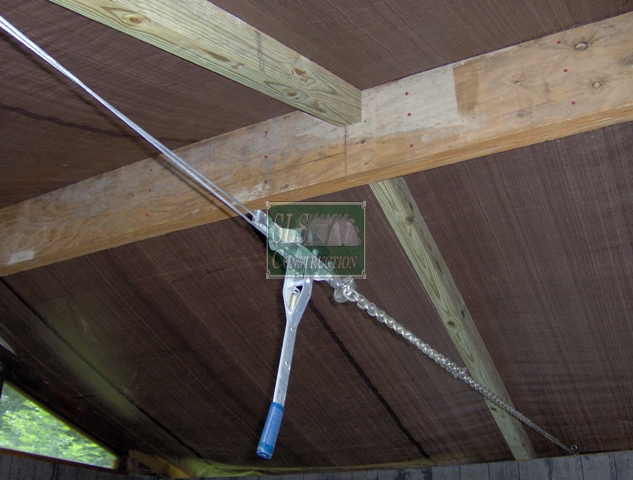
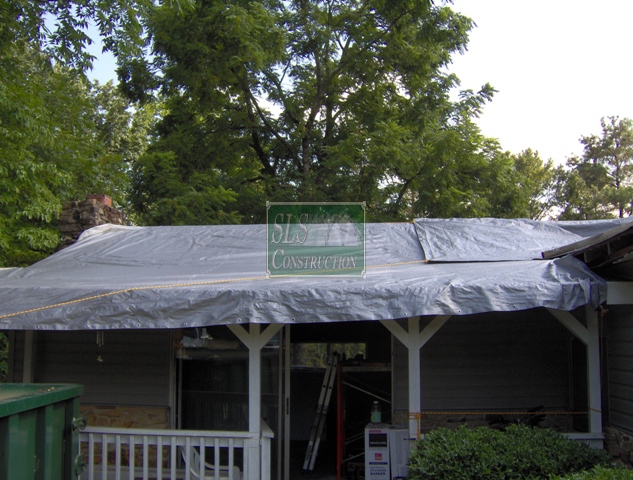
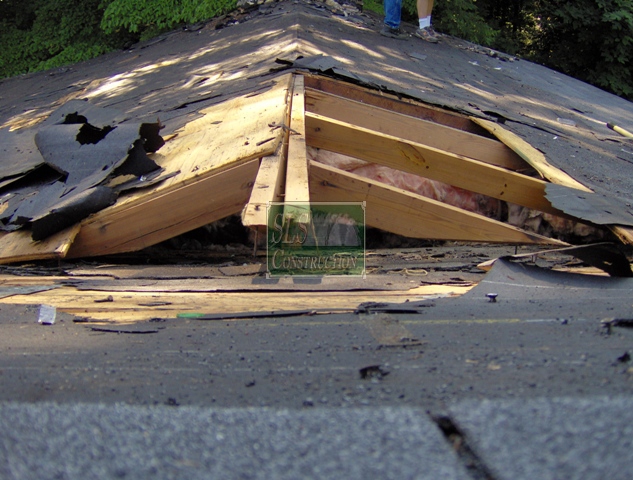
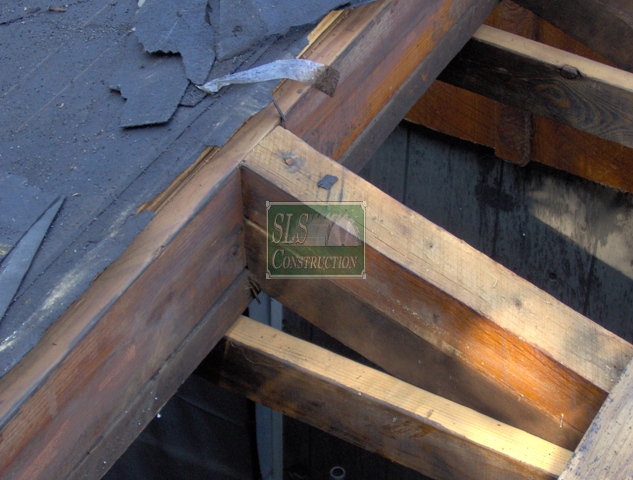
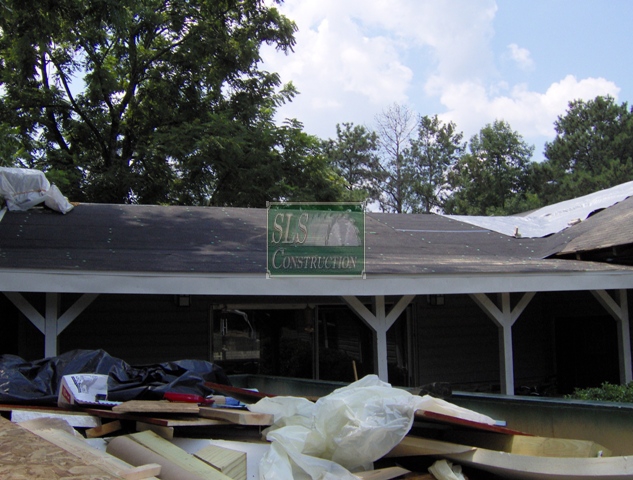
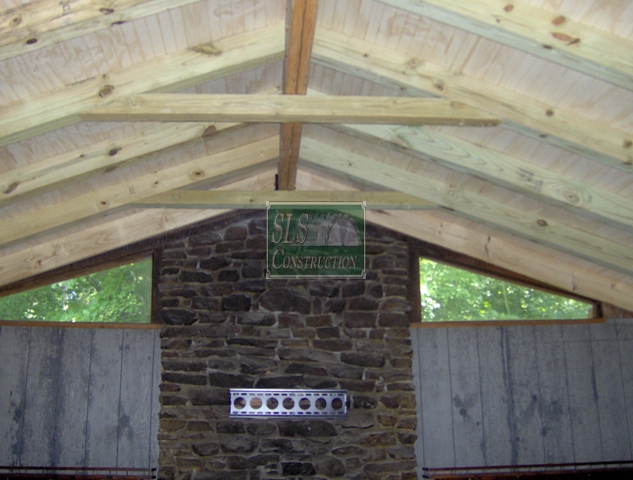

Excellent post to keep the homeowner informed. I may well link to it in the future if that's okay.
Excellent post to keep the homeowner informed. I may well link to it in the future if that's okay.